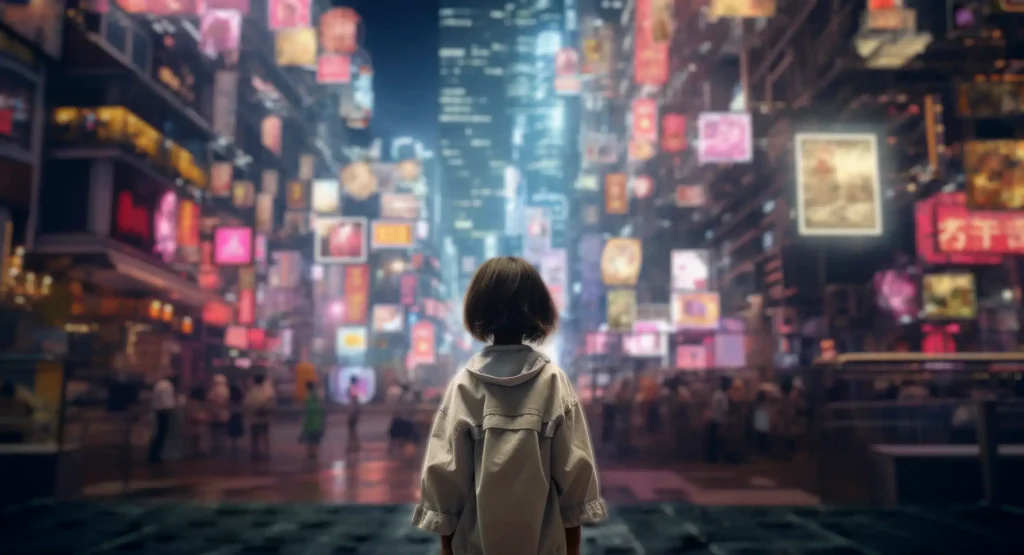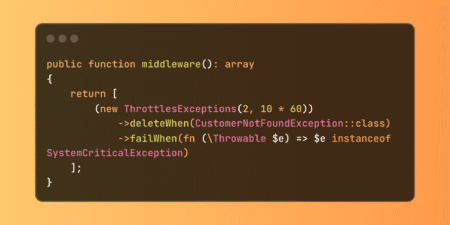
Scroll through Instagram, TikTok, or Twitter, and you’ll see them everywhere—stunning AI-generated images that transform everyday selfies into Studio Ghibli-inspired masterpieces. These dreamy, hand-painted-style images have captured the internet’s imagination, turning millions of users into anime-like characters straight out of a Hayao Miyazaki film.
But as AI tools work their magic, an important question stays in the background: What are we really giving away in exchange for these picture-perfect creations?
This isn’t the first time an AI-powered trend has gone viral. We’ve seen viral AI trends before—FaceApp’s aging filters, Lensa’s avatars, TikTok’s beauty effects—all fun at first until concerns about data privacy followed. When millions upload their faces, where does all that data really go?
Are we simply ridding the creative wave, or are we unknowingly feeding the algorithms with personal data that could be used for something far beyond art? Let’s take a closer look at the risks behind the Ghibli AI craze.
Let’s Understand What Is Ghibli Studio & Why This Trend Explode?
For decades, Studio Ghibli has fascinated audiences with its awesome hand-drawn animation and delightful storytelling. Founded by Hayao Miyazaki and Isao Takahata, the studio brought to life masterpieces like Spirited Away, My Neighbor Totoro, and Howl’s Moving Castle. With its unpredictable characters, painterly backgrounds, and rich emotional depth, Ghibli’s art style has inspired generations.
Now, thanks to AI, anyone can step into that magical world—at least in digital form. AI-generated Ghibli-style portraits have taken over social media, transforming selfies into soft, dreamy anime-like images. But how did this trend explode so quickly?
It all started with Seattle-based engineer Grant Slatton, who unknowingly set off a viral storm. After OpenAI released its enhanced image-generation tools, he posted an AI-generated Ghibli-style picture of his family on X (formerly Twitter). His light-hearted caption— “Tremendous alpha right now in sending your wife photos of y’all converted to Studio Ghibli anime”—struck a chord, racking up 44,000 likes and over 46 million views. Within hours, thousands of users followed suit, eager to create their own animated transformations.

Even OpenAI CEO Sam Altman couldn’t ignore the frenzy. He jokingly begged users to slow down, admitting that his team needed sleep. The surge in demand was a clear sign of how quickly AI art can captivate the internet.

But while the creative possibilities seem endless, there are underlying concerns. As Daniel Atherton, Artificial Intelligence Incident Database Consulting Editor at the Responsible AI Collaborative, warns:
“Uploading facial images to cloud-based AI generators can introduce several risks. This is particularly the case when terms of use and privacy policies are vague or permissive. Uploaded content is often retained for model training or internal evaluation. In the absence of unambiguous statements to the contrary, users can expect this is the case. Images of faces (and especially high-resolution ones) can be used to extract biometric signatures, and those are potentially able to be repurposed for profiling and surveillance. The absence of clear deletion policies or data boundaries increases the likelihood that images persist in systems beyond one’s awareness and control.”
While AI-generated art isn’t new, the sudden boom is fueled by OpenAI’s decision to offer free access to its advanced text-to-image tools. Previously, these features were paywalled, but now, with millions experimenting at no cost, AI art has entered a new era of mass adoption.
And so, Studio Ghibli’s legacy lives on—not just through classic films but through a new wave of AI-powered creativity that lets anyone reimagine themselves in Miyazaki’s world.
How AI Image Generators Work—And Why Your Data Matters
When users share their facial images, they often overlook the fact that these are highly sensitive biometric markers—the same ones used in Apple Face ID, Windows Hello, and other biometric authentication systems. Once uploaded, these images can be stored, analyzed, and potentially used for purposes beyond the user’s control.
“Facial images, especially when captured in high resolution, are unique identifiers and once uploaded online, cannot be considered private anymore,” warns Shashank Bajpai, Chief Information Security Officer & CTSO (VP – IT) at Yotta Data Services. “They are susceptible to misuse, including identity theft, creation of synthetic identities, and even impersonation in digital ecosystems.”
Alexandra Charikova, Growth Marketing Manager at Escape (Y Combinator), also highlights how third-party platforms can be even more dangerous. “Unfortunately, users don’t have the reflexes to check what data they’re uploading into AI-based generators,” she says. “The worst part is that these websites often have even less stringent privacy policies… they collect geolocation data associated with uploaded images.”
Here’s what really happens behind the scenes:
- AI Training – Your facial data could be used to refine machine learning models, enabling AI to replicate your face in deepfakes or unauthorized digital avatars.
- Data Monetization – Many AI platforms reserve the right to use uploaded content for commercial purposes, leading to your image appearing in ads, databases, or even surveillance systems.
- Security Exploits – As Bajpai points out, “Awareness and cautious digital behavior are the first lines of defense against such threats,” especially with AI-based spoofing capable of bypassing facial recognition systems.
Charikova adds that “someone could build a website… and then steal images, location & even names… to create deepfakes, steal identities, etc.”
What Are We Feeding the Algorithms?
As Ghibli-style portraits flood social media, many users remain unaware of what they’re truly handing over. These AI tools aren’t just transforming selfies—they’re collecting data that could be used in ways we don’t expect.
“Users should pause before uploading their images to AI image generators… you are basically giving that AI algorithm free training data,” warns Anmol Agarwal, Senior Security Researcher at Nokia. These uploaded photos, often high-quality and personal, serve as training fuel—refining AI’s ability to recreate human likenesses, sometimes even generating similar faces for other users.
Digital Fingerprinting & Profiling: Even if your photo isn’t stored, platforms may still extract metadata—like your device info, location, and usage behavior. This silent profiling builds detailed digital identities that can be sold, surveilled, or exploited.
“Whenever a user uploads an image… the user is basically giving that service the right to process that image,” Agarwal notes, highlighting how many users skip over permissions in their excitement to try viral tools.
Deepfakes, Identity Theft & Fraud: AI-generated portraits add to a growing pool of facial data online—data that can be manipulated for deepfakes or used in synthetic identity fraud. With more facial imagery available, cybercriminals can more easily impersonate, deceive, or scam.
Monetizing Your Face: Many platforms grant themselves broad rights through vague or hidden terms. From using your likeness in ads to storing your image indefinitely, the risks are real. The controversy surrounding Lensa AI is a reminder—once your face is online, you may no longer own it.
What seems like a fun trend can quietly fuel powerful algorithms, often with little transparency or control. As Agarwal puts it: “If I upload my photos to an AI image generator… it could generate photos that look like me and give those same photos to another user.” That’s not just unsettling—it’s a wake-up call.
History Repeats Itself
AI-powered apps aren’t new—but their privacy pitfalls persist. Long before Studio Ghibli-style portraits went viral, apps like FaceApp, Lensa AI, and others already sparked heated debates around facial data, consent, and AI model training. According to Aparna Achanta, Principal Security Lead at IBM, “The Ghibli trend reflects earlier debates surrounding apps such as FaceApp and Lensa AI… raising issues regarding the commercialization of biometric data and the unauthorized training of AI models.”
These AI tools rely heavily on high-resolution, front-facing images, ideal for deepfake training and identity theft. Bajpai, notes that “the risks are amplified by social media-driven hype,” leading to a “mob mentality fueled by FOMO… where users hastily share personal data without assessing long-term consequences.”
Consider Lensa AI, which rocketed to fame with AI avatars in 2022. Agarwal recalls how “the owner of Lensa AI, Prisma Labs, had terms and conditions that… grants Prisma Labs a perpetual, irrevocable, royalty-free… license to use… uploaded user content.” In simpler terms, once users uploaded their faces, the app could legally use and profit from that data— “forever… generate other content… [and] sell it to companies.”
The recurrence of these patterns shows how “free” apps aren’t really free, as Achanta warns—they frequently capitalize on personal data under vague terms. Bajpai adds that “many of these AI applications lack transparency… and whether [data] is shared with third parties.” That opacity leaves the door wide open for misuse, especially as AI capabilities become more powerful and less detectable.
To see how history keeps repeating, here’s a quick breakdown:
| Viral AI App | What Happened? |
| FaceApp (2019) | AI face-aging app stored user photos indefinitely. Sparked global outcry over potential Russian data collection. |
| Lensa AI (2022) | Users unknowingly gave full rights to Prisma Labs to use and profit from their images. Terms allowed indefinite image use and derivative creation. |
| TikTok Beauty Filters | Used real-time facial mapping—raising questions about whether these facial maps are stored and reused for AI training. |
With every viral trend, we seem to forget the last. As Bajpai warns, “the same data security concerns… still apply, but now AI models are more advanced, making misuse even more powerful and undetectable.” The cycle continues—unless we start reading the fine print before uploading our faces for fun.
The Privacy Loopholes in AI Image Generators
AI image generators may seem like harmless fun, but behind the filters and fantasy lies a privacy minefield. Many of these apps use vague and confusing Terms of Service that give them broad control over your personal data—often without you even realizing it. For example, do they delete your images after use?
don’t say. Can they share or even sell your biometric data to third parties? In many cases, yes. And worse, your face could be stored indefinitely and used to train AI models for purposes far beyond what you intended.
So, how do you protect yourself?
- Read the Terms of Service and Privacy Policy—yes, even the fine print.
- Look for opt-out options for data collection or AI training.
- Check if the app deletes images after processing, or if your photos are stored in the cloud.
How to Protect Yourself from AI Data Exploitation
As AI-generated portraits and filters continue to flood our feeds, the excitement of transformation often overshadows the real danger—data exploitation. Just like with FaceApp and Lensa AI, users may unknowingly trade personal privacy for a fleeting aesthetic thrill. However, security experts warn that there are practical steps you can take to protect yourself.
“To mitigate these risks, users must adopt a privacy-first approach,” urges Bajpai, CISO at Yotta. He recommends simple yet effective actions like not uploading facial images tied to biometric systems, reading the terms, and avoiding apps that don’t clarify how your data is handled. He adds, “Use older or edited images, disable data retention, and be cautious of app permissions.” Bajpai emphasizes the social aspect too— “Educate others” to break the cycle of blind participation driven by FOMO.
Agarwal, Senior Security Researcher at Nokia, suggests technical defenses like adding “adversarial noise” to your images. “Even though you send AI a photo of yourself, it is contaminated with pixels that act like noise,” making it harder for AI to learn from it. He also warns, “Avoid uploading anything sensitive and avoid uploading images of children”, due to the growing risks of deepfakes.
Achanta from IBM shares another layer: “Avoid linking personal accounts, opt out of model training, and steer clear of high-res facial photos.” Logging in with alias emails and using VPNs or encrypted browsers can also reduce digital exposure.
Still, privacy isn’t just about tools—it’s about awareness. Atherton notes that “Users may be contributing data to systems designed for long-term retention and reuse.” While some tools offer local processing, “the effectiveness of protective behavior ultimately depends on the underlying system’s transparency.”
Below is a handy table summarizing expert-backed safeguards:
| Best Practice | Why It Matters |
| Avoid biometric image uploads | Prevents facial data from being used for surveillance or identity fraud |
| Read Terms & Conditions | Ensures you know if companies claim ownership or resale rights over your images |
| Use low-res/modified images | Makes it harder for AI to train models using your exact likeness |
| Disable permissions and location | Limits what the app can track beyond just your photo |
| Don’t link social accounts | Reduces your digital footprint and tracking across platforms |
| Delete data if allowed | Prevents long-term storage and misuse of uploaded content |
| Use VPNs and encrypted tools | Adds a layer of anonymity and secures image uploads |
| Educate others | Helps create a community that questions trends before blindly participating |
Ultimately, “a good general rule is to proceed as if any image you upload could be retained and repurposed,” Atherton cautions. In the age of AI beauty, safeguarding your digital face is more than caution—it’s survival.
To Sum Up
The Ghibli AI trend is a perfect example of how technology can bring joy and creativity to millions. It’s fun, nostalgic, and undeniably impressive. But as we marvel at the magic of AI, we should also ask: at what cost? Every viral AI trend fuels smarter models, but often by feeding them our personal data—sometimes without us realizing it.
This doesn’t mean we should stop enjoying AI-generated art, but it does mean we should be more aware of what we’re giving away. Just like we wouldn’t hand over our house keys to a stranger, we shouldn’t blindly trust AI platforms with our digital identity. The real challenge isn’t choosing between creativity and caution—it’s learning how to balance both.
Source: Read More


